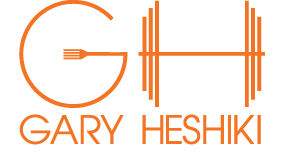Exercise Breakdown: Do Your First Chin-Up
Most people know that chin ups and pull ups are one of the best exercises for the upper body including but not limited to:
- Building stronger lats, traps, shoulders and arms.
- Demonstrating proper balance around the shoulder blade, if you perform them correctly
- Creating strong shoulder stabilizer
- Balancing out the numerous pressing motions in most workout programs (unless it's my program, you'll be doing pulls in one form or another every workout)
From a technical standpoint it really should be called chest ups. This means that you aren't barely clearing your chin over the bar, rather bringing your chest to the bar which ensures you're getting proper scapular depression and retraction.
HOW TO (there are many ways to get up there, this is how I like to teach the move)
1. Pull patterning w/squat
Aside from not having the strength to pull yourself up to the top of the bar, most have zero clue how to create full body tension. This is noticeable when watching someone who can sort of do 2-3 reps but swing around A LOT.
This is why using a pull-up assist machine doesn't quite help overcome the stabilization you'll need once you jump onto a free standing bar. Not to mention most of these machines are built very poorly with the hand spacing being very off.
This drill allows the lifter to learn the movement correctly, engage the proper muscles (as much as they can) while also focusing on maintaining a tight core the entire time.
I would combine this with Chest supported DB Rows. This will allow you to initially start properly engaging the correct muscles in a safe manner.
2. Inverted Rows
The next exercise I like to progress people to is the inverted row. We usually stay with this until the person can comfortably perform a set of 8 reps with their body underneath the anchor point of the suspension trainer or barbell.
I love the inverted row and will start here for those with some established pulling strength in place. It adjusts very easily and allows for quick change by either stepping back or moving forward.
I would combine this with the pull up + single leg patterning.
By lowering the amount of stability and help the legs give with only one foot on the floor it gets harder without actually changing much else. Here we continue to work on stability during the pull up while increasing both the strain on the upper body and need for body control.
3. Kneeling Pull-up
I would then move them to a suspension trainer or smith machine they can go from a tall kneeling position into a pull up. This is fantastic since you'll have your legs still on the floor for help but they won't be fully engaged given the positioning of the body here.
This is a great drill for really turning up the tension needed for all vertical pulling.
This can also be used in conjunction with Negatives and isometric holds from the bar.
4. Band Assist Pull-Ups
The final progression is to use a superband and perform them hanging from a bar.
Here's a video I created outlining some of the mistakes I see such as putting an unprepared client in a heavy band and watching them practically swing into the other end of the rack.
There's no predetermined amount of time any one person will spend with each of these movements. What's most important is finding what works the best for you and hammering that as hard as possible working towards overloading the muscles. Be patient and in time you'll be flying up and down that pull-up bar.

